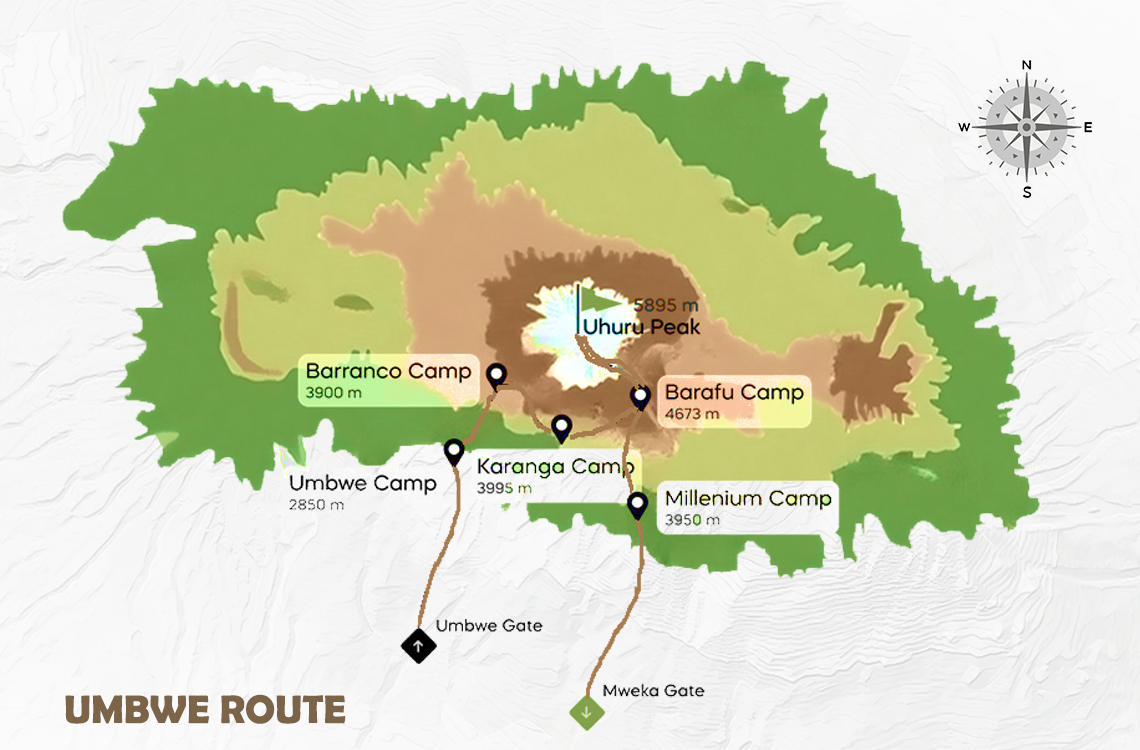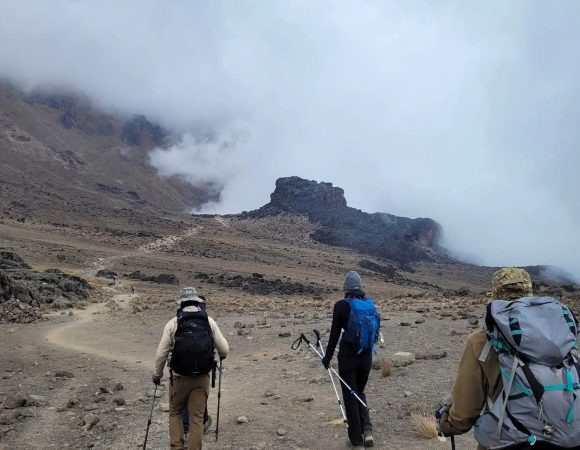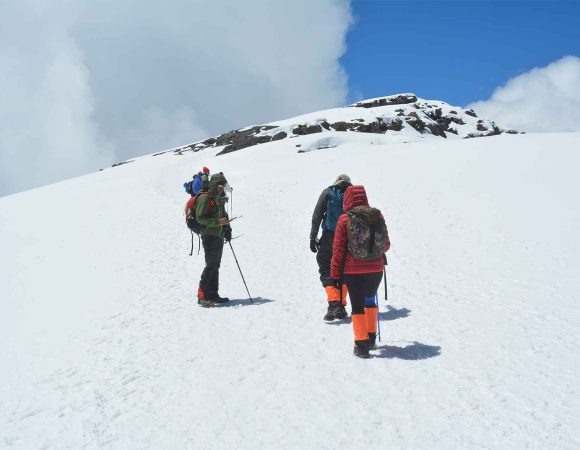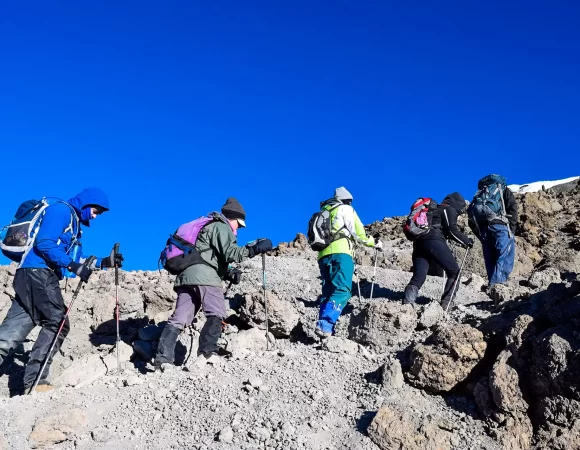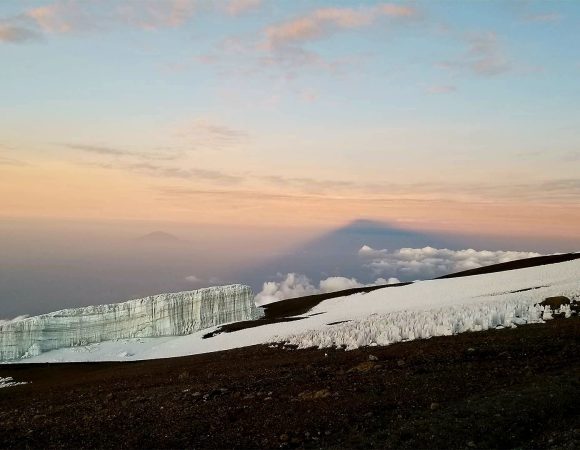7 Days Kilimanjaro Climbing Umbwe Route
Tour overview
The Umbwe route is a short, steep and direct route. It is considered to be very difficult and is the most challenging way up Mount Kilimanjaro. Due to the quick ascent, Umbwe does not provide the necessary stages for altitude acclimatization. Although the traffic on this route is very low, the chances of success are also low. The route is offered at a minimum of six days, though seven days is recommended when attempting this route. The Umbwe route should only be attempted by those who are very strong hikers and are confident in their ability to acclimatize. However, overall, the Umbwe route is not recommended and we discourage its usage for our clients.
Tour Type
Duration
Tour Location
Airport Pickup
- Kilimanjaro Int. Airport (KIA)
Tour Highlights
- Most scenic route at Kilimanjaro
- Climbing passage in the Barranco Wall, surefootedness required
- Ascent over Umbwe route and descent over the Mweka route
- Height profile does no positive effect on acclimatization
Tour Itinerary
Kisambi Tours' representative will welcome you at Kilimanjaro International Airport (JRO) and accompany you to your accommodations for the night. Our guides are well connected with the country, so you'll be in good hands from the minute you arrive until you leave.
At 8am leave Moshi for Umbwe Gate where you will meet our porters, guides, and cooks who will spend the next six days trekking with you to Uhuru Peak, the roof of Africa. After arriving, wait at the gate while we register your climb and the porters and guides make final preparations. Your first day’s destination is Cave Bivouac Camp, approximately 6 hours from the gate. The trail is steep and can be slippery in some places.Hike through the moss-covered trees of Kilimanjaro’s cloud forest. The forest will thin later in the hike and heathers, tall grasses and wildflowers will come into view. Porters and cooks will walk ahead to set up the camp in time for your arrival.
- Elevation: 1,800m/5,905ft to 2,850m/9,350ft
- Hiking Time: Approximately 6 hours
- Distance: ~11 km
- Difficulty: Moderate to Difficult (steep and slippery in places)
- Habitat: Cloud forest, moss-covered trees, heathers, tall grasses, wildflowers
- Meals: Breakfast, Lunch & Dinner Included
The first section of the trail continues following the ridge. After leaving the forest, continue through open moorlands until reaching Barranco Camp. Barranco is generally regarded as the most scenic campsite on the Umbwe Trail as it’s surrounded by giant senecios and lobelias. As Barranco is in a valley, the sun rises later than at the other camps.
- Elevation: 2,850m/9,350ft to 3,900m/12,960ft
- Hiking Time: Approximately 6-7 hours
- Distance: ~8 km
- Difficulty: Moderate
- Habitat: Moorland, giant senecios, lobelias
- Meals: Breakfast, Lunch & Dinner Included
This day is designed mainly Acclimatization. Adding this day will ease your effort, and amplify your success rate of making it to the top. We will have a small hike to Lava Tower approximately 3hrs to 4hrs for two ways.
- Elevation: 3,900m/12,800ft
- Hiking Time: N/A (Rest and Acclimatization)
- Distance: N/A
- Difficulty: N/A
- Habitat: Moorland
- Meals: Breakfast, Lunch & Dinner Included
Leave Barranco Camp after breakfast for Karanga Valley. The day begins with a 1.5 hour scramble up the Barranco Wall. This is the hardest part of the day and in some places you may have to use your hands to aid your climb. After reaching the top, hike through fairly level terrain before making a short but steep descent into the green Karanga River Valley.
- Elevation: 3,900m/12,960ft to 3,995m/13,780ft
- Hiking Time: Approximately 4-5 hours
- Distance: ~5 km
- Difficulty: Moderate (scramble up Barranco Wall)
- Habitat: Moorland, alpine desert
- Meals: Breakfast, Lunch & Dinner Included
After breakfast, begin the hike to Barafu Camp. On the way to Barafu, view several of Kibo’s glaciers as well as the junction that connects the descent route, Mweka, with the Machame trail. During day four, hike by the Heim, Kersten and Decken Glaciers. Although the trail to Barafu passes through alpine desert with little vegetation, Barafu Camp offers stunning views of Kibo and Mawenzi peaks. Try to sleep after finishing dinner as you will wake before midnight for your summit hike.
- Elevation: 3,995m/13,780ft to 4,673m/15,100ft
- Hiking Time: Approximately 4-5 hours
- Distance: ~4 km
- Difficulty: Moderate
- Habitat: Alpine desert
- Meals: Breakfast, Lunch & Dinner Included
Around midnight, begin the final ascent to Uhuru Peak. Hike by the light of your headlamp for the next six hours. The ascent to the crater rim is the most challenging part of the entire trek. The trail is very steep until you reach the crater rim at Stella Point.
The hike from Stella Point to Uhuru Peak is a gradual climb and, as far as hikes go, not very difficult. The altitude, however, makes the hike long and tiring. The crater rim hike takes approximately one hour. Upon reaching Uhuru, take photos of your guide and group at the peak before beginning the descent to Millenium Camp. On the way down from Uhuru, enjoy views of the mountain, crater, clouds and glaciers.
At Barafu Camp, eat breakfast and take a short break. You still have another three to five hours to go before reaching Mweka Camp.
- Elevation: 4,673m/15,100ft to 5,895m/19,340ft (Uhuru Peak), then down to 3,950m/10,170ft (Millenium Camp)
- Hiking Time: 8-10 hours to Uhuru Peak, then 3-5 hours to Mweka Camp
- Distance: ~18 km total
- Difficulty: Very Difficult (steep ascent to summit)
- Habitat: Arctic summit zone, then descent through alpine desert to moorland
- Meals: Breakfast, Lunch & Dinner Included
After breakfast, finish the trek with a hike through the forest to Mweka Gate. The trail may be slippery following rain. Our vehicles will meet you at the lower station of Mweka Gate to take you back to Moshi.
- Elevation: 3,100m/10,170ft to 1,500m/4,920ft
- Hiking Time: Approximately 4-5 hours
- Distance: ~10 km
- Difficulty: Easy to Moderate (downhill)
- Habitat: Forest
- Meals: Breakfast, Lunch & Dinner Included
Includes
- Kilimanjaro trekking according to the itinerary
- Professional, English-speaking guide
- Mountain crew (cook, summit porter& porters)
- Overnight stays in tents
- Camping equipment (tents, sleeping mats, tables, chairs )
- Meals according to the itinerary
- Drinking water, tea & coffee
- Oxygen tank and oximeters
- All national park fees
- Transfer from the hotel to the National Park gate and back
Excludes
- Alcohol and soft drinks
- Sleeping bag
- Flights
- Visa fees
- Tips
- Personal spending money for souvenirs
- Travel insurance
- Airport Transfer
- Pre and Post climb Hotel Accommodation
Gallery
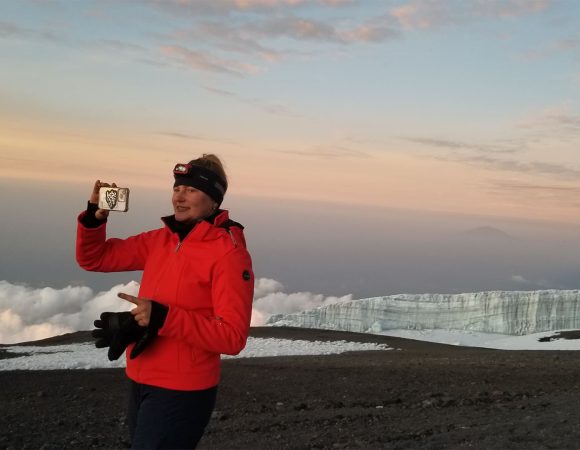
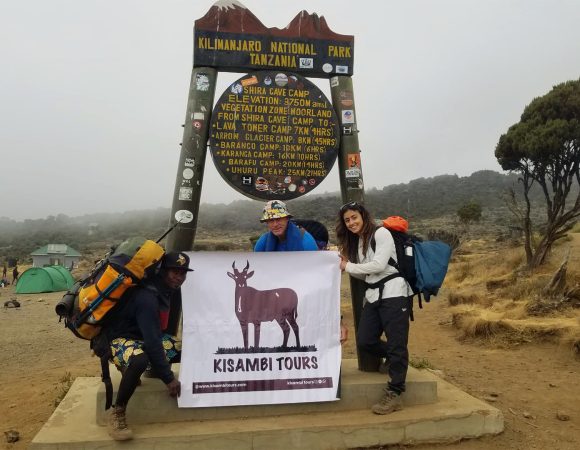
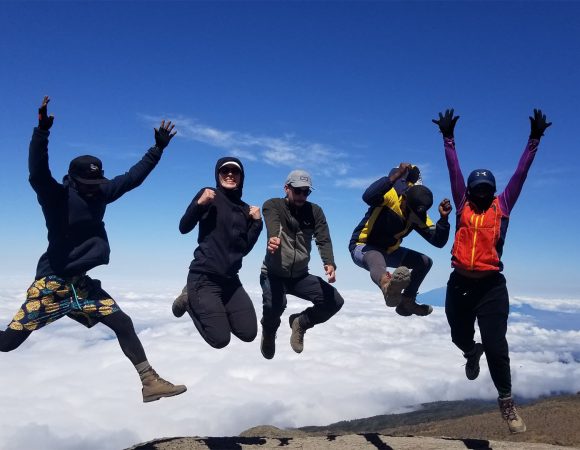

GROUP DISCOUNT
Group adventures have a predetermined charge per person based on group size. However, we offer optional options for specific private and tailor-made preferences that are best suited to you, your family, and friends.
| GROUP SIZE | PRICE PER PERSON |
|---|---|
| 1 Pax | $ 2110 |
| 2 Pax | $ 1890 |
| 3 Pax - 4 Pax | $ 1750 |
| 5 Pax - 6 Pax | $ 1710 |
| 7 Pax | $ 1690 |
HIKING FAQ'S
Best time to climb Kilimanjaro is a major Kilimanjaro Faq’s asked by most of the trekkers. Mount Kilimanjaro can be ascended year around and all the Kilimanjaro routes will support climbing Kilimanjaro round the year. As Kilimanjaro is near to equator the region experiences a very less extremes of winter and summer weather, rather it has wet and dry seasons. Hence, the Best Time To Climb Kilimanjaro is dry season which is warm. It is advised to avoid climbing Kilimanjaro during wet season for beginners. However, if you are with a professional climber and have all the safety precautions taken, then climbing Kilimanjaro in wet season would be really adventures. This also depends on your preference of Kilimanjaro Routes. You will need to choose best Kilimanjaro route and also choose a longer itinerary for better acclimatization.
The weather in Kilimanjaro is considered as wet season and dry season. Before knowing about Best Time To Climb Kilimanjaro”, the weathers and climates are very important to decide for Climbing Mount Kilimanjaro. All the Kilimanjaro routes pass the ecological or climatic zones where the weather tends to change hourly due to the high-altitude condition and the trade winds. The wet season has more rainfall and dry season has lesser rainfall with more dry days. The main climatic zones are: Cultivation zone, Rainforest zone, Heath or moorland zone, Highland dessert zone and Artic zone. Each zone are unique in its own way and also have a distinct weather conditions all the way.
The Kilimanjaro Food during your climb will help you to avoid from Kilimanjaro Altitude Sickness. The menu on Kilimanjaro is designed to ensure your food intake matches your level of exertion. It will provide you with a good balance of protein, carbohydrates, fruit and vegetables. When you are at altitude you could start to feel uneasy and your appetite may be suppressed, so the meals prepared at high altitude usually contain more carbohydrates and less protein to help you to digest your food. Your meals will be prepared by your cooks on Kilimanjaro and the food will be carried by your porters. You will be provided with Porridge, Toast, Pancakes, Egg, Smoked sausages, Tea, coffee and Hot chocolate. Sandwiches, Hard boiled eggs, Biscuits, Fruit juice. Soup, Pasts, Rice, Potatoes, Chicken, Beef, vegetables, Salad and Fresh fruits.
The Kilimanjaro Food during your climb will help you to avoid from Kilimanjaro Altitude Sickness. The menu on Kilimanjaro is designed to ensure your food intake matches your level of exertion. It will provide you with a good balance of protein, carbohydrates, fruit and vegetables. When you are at altitude you could start to feel uneasy and your appetite may be suppressed, so the meals prepared at high altitude usually contain more carbohydrates and less protein to help you to digest your food. Your meals will be prepared by your cooks on Kilimanjaro and the food will be carried by your porters. You will be provided with Porridge, Toast, Pancakes, Egg, Smoked sausages, Tea, coffee and Hot chocolate. Sandwiches, Hard boiled eggs, Biscuits, Fruit juice. Soup, Pasts, Rice, Potatoes, Chicken, Beef, vegetables, Salad and Fresh fruits.
It is better to check with your doctor or centre of disease control before leaving for any recommendations. This one of the major Mount Kilimanjaro Facts you should take into considerations. However, while entering Tanzania you will need a yellow fever vaccination certificate and also malaria vaccination certificate. Apart from these other vaccinations are not compulsory. However, it is better to consult your doctor for Vaccinations for Kilimanjaro if you have asthma or any chronic health problems.
The usual ratio is three or four local staff for each climber, although small groups may have four or five staff per climber. The staff usually consists of an English speaking guide or guides, a professional cooker, and gear-carrying porters. We encourage you to interact with your staff. They are all trustworthy, local people who have grown up in the shadow of the mountain. Many of them have climbed the peak a hundred or more times.
We can measure each day in walking hours rather than kilometers. Most days, other than the summit day, will begin with breakfast around 6:30 AM and departure at 7 AM. You will walk four to five hours with a break for lunch followed by another hour or two of hiking in the afternoon. These days are not long or difficult and you will be advised to walk slowly.
We recommend a minimum of eight days from the USA and Europe, although some people may wish more time for the trip. We can customize itineraries or routes to offer more days in the park(s). Some people may wish to climb nearby Mount Meru as well. If you have more than eight or nine days, you can choose any of the main routes on the mountain and still have time for a wildlife safari before or after your trip.
Words from Our happy Clients
We have received feedback from our clients, and Kisambi Tours is rated 5/5 by them. Customers grant us this honor because we are constantly committed to doing whatever it takes to ensure that their safari is completely satisfactory.
Verified Best experience ever: Mount Kili My experience as a solo Mount Kilimanjaro climber with Kisambi tours was one of the best experiences of my life. The owner of Kisambi tours, Mr Elisante is the kindest and offers the best services. My Guide, Matty was heaven sent. He is all about positivity. He was there for me when I wanted to give up. Thank you, Matty. You are a Star 🌟 The porters and the cook were amazing and wonderful. Five stars meals during my climb. I will do it again just for the good (Hahahaha)! Kisambi tours, thank you for this amazing experience. Much loveTeoVerified Excellent experience as a solo traveler Tanzania Safari on your own? I kind of thought I was crazy to do this, but a friend who has done Safari 3x said it is her dream to have the truck entirely to herself. And now, I understand why. I have never felt so spoiled. If you are thinking about a Tanzania or Tanz/Kenya Safari, I can highly r Kisambi Tours & my guide, Elvis. It was a dream. We saw the big five +++. Elvis has 20 years of experience and knows exactly where to go every day. He does not listen to the nattering on the radio, people call him because he has 20 years of friendships in the Parks. He made sure everything was perfect and is terrific company. The trucks from the big companies looked crowded & uncomfortable. And when I was in the hotels and camps, people that were on long tours in big groups said there were some fractures in the groups & people not getting along. It's a hot & dusty AMAZING experience, so my very small group of just me and Elvis 🤣 got along just fine! The owner, Elisante, checked in with me on WhatsApp often, to make sure everything was going smoothly. I'm quite sure the big big companies do not do that :-). If you're thinking solo Safari, do it. I'm so glad I didn't book with a tour company. I'm so sad it's over, but so glad it happened ❤️🦛🦓🦒🦁🦏Verified Tarangire, Serengeti and Ngorongoro with Dieter Dieter was an excellent guide, who drove us safely to every place. He knew all the zones and allowed us to see so many animals. He helped us in deciding when to leave in the morning, was kind and recognized/explained so many animals. We are really grateful to have travelled with him.Verified Excellent day! Polite guide! Professionally treatment Fantastic experience, happy 😊 trip, professional stuff. We enjoy so much the hole experience! We felt safe and happy with the guide and driverVerified Safari with friends and family We just came back from a 6 day private safari Tour in Tanzania and had such a great experience. We were a group of 8 and had two vehicles. They were driven by Joseph and Ernest. These guys were great. They knew everything about the area, and all about the plants and animals. They made sure we had the best view of the animals in all the parks.Verified Kilimanjaro Hike We went on a 6-day hike to the top of the Kilimanjaro; simply one of the greatest experiences in my life. Apart from the beautiful views, the good care by our guides and the good food made it a hike never to forget. I'd recommend these tours to anyone.Verified Amazing experience with Kisambi In particularly, we wanted to book with a Tanzanian tour operator, so ended up at Kisambi tours, which was recommended to us by a friend. From the beginning onwards, Elisante was very helpful in discussing the possibilities for our tight schedule, and provided us with travel itineraries for all options. The communication beforehand was very smooth, making the preparations upon arrival in Moshi very pleasant. Upon arrival at the bus stop, we were picked up and since then, it felt like an 'adventurous all-inclusive holiday to never forget'. Both the climb as well as the safari were private (I think this is most often the case).We started with a 7 day Lemosho Kilimanjaro hike, in which we were accompanied by our guides Rama and Amani. The guides were super friendly, and knowledgable. The porters (8) made sure to arrive at the camp earlier than we did, in order to be able to change clothes immediately, or sit on the camping chair. It was nice to see that the porters and guides really team up (they always works together in this composition). We were truly amazed by the food that was prepared during the climb, especially considering the limited utilities. Upon arrival, hot water was provided for water/hot chocolate/ tea, accompanied by popcorn. When possible, the chef prepared a warm lunch halfway. In the evening, dinner started with soup, and always fruit as dessert. Whereas I could overcome the 'toilets' at the campsites, looking back: my friend would have paid an additional fee to have a portable toilet along. After the climb, we were dropped off at our hotel to get a hot shower and rest for a bit. The next morning we were picked up by Gabrielli for our next adventure: a 3-day safari in Tarangire, Ngorongoro crater and lake Manyara. Gabrielli was very relaxed, knowledgeable and respectful towards the animals. Especially his attitude towards the animals: 'We'll just wait here for a bit and they will come to us: you'll see', made him a really good guide, since in our opinion other safari vans could be very intrusive towards the wildlife. All in all, our experience was really good and we would totally recommend Kisambi to anyone planning to go to Tanzania.Verified Unforgettable hiking experience I booked through Elisante the 8-day Lemosho route up Kilimanjaro with my buddy to celebrate our milestone birthdays. We ended up only needing 7 days, and had an amazing time, took amazing pictures, and am truly grateful for our experience. Was it hard? Yes, but totally worth it. Our tour guide, Rama, was motivating, friendly, and so knowledgeable. He helped turn a tough experience into one where we can look back and say we climbed one of the tallest mountains in the world. Shout out to the crew of porters as well— so nice and helpful. The food wasn’t bad— I was happy to get a vegetarian meal. One tip— ask about and spring for the private bathroom!Will consider going back one day with kids.Verified One day Maasai village tour My husband and I booked the one day tour for Maasai village and Chemka hot spring. We had unpleasant experience at Maasai village. We are not sure how authentic they are, but everyone in the village tried to sell us things at ridiculously high price.However, our tour guide is knowledgeable and friendly.Verified Excellent organisation I've just spent one week in Tanzania organised by this agency. Everything was absolutely perfect, from the arrival when Alen came to pick us up till the end of the journey. We were 9 people, guided by two excellent rangers Kelvin and Timothy and the great local guides Alen and Innocent. I was guided by Alen and Kelvin. They all are very smart and have great knowledge about parks, animals and culture. Alen was very kind and genuine, reassuring the group about the safety and giving good explanation about anything we asked.Another special appreciation to Kelvin, who contributed to a memorable, unique trip thanks to his safe guide, his excellent communication in Italian, his friendly manners and his passion for this job as he explained peculiar characteristics of each animal and social communication among them; he even had the sixth sense for finding hidden animals. I truly appreciated that. The tours were well organised, no stressful timings, yummy food prepared by very friendly chefs. We all dined together and then chilled out after a long day as old friends ☺️ I do thank them for rendering my birthday in Tanzania memorable with a big surprise 🎉🇹🇿 I truly recommend it!
Related Tours
will serve as a starting point, keep in mind that your path will be entirely unique to you.
- Quality4.67
- Location5
- Amenities4.33
- Services5
- Price4
5 Days Kilimanjaro Hiking Via Marangu Route
- Quality4.67
- Location5
- Amenities4.33
- Services5
- Price4
8 Days Kilimanjaro Climb Lemosho Route
- Quality4.67
- Location5
- Amenities4.33
- Services5
- Price4
7 Days Kilimanjaro Climb Machame Route
- Quality4.67
- Location5
- Amenities4.33
- Services5
- Price4


